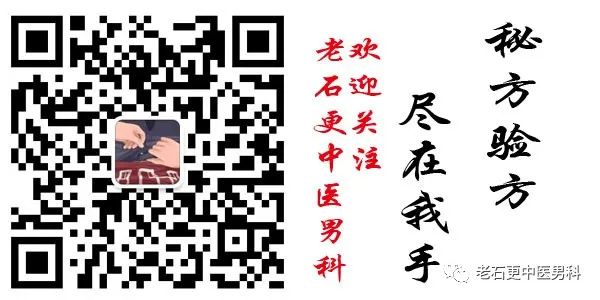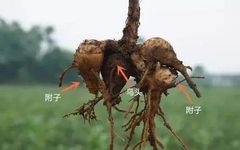Aconite (Fu Zi) is a processed product of the tuber of the plant Aconitum, belonging to the Ranunculaceae family. It has a pungent and warm flavor, and it enters the Heart, Spleen, and Kidney meridians. Its effects include reviving yang, assisting yang, dispelling cold and dampness, warming the meridians, and alleviating pain.
However, raw Aconite is highly toxic, and improper use can lead to severe adverse reactions.
After processing, the toxicity of Aconite is reduced while its warming properties remain, making processed Aconite milder and suitable for warming the Spleen and Kidney, and replenishing the vital fire. It is commonly used to treat conditions of yang deficiency and excess yin.
Professor Wang Qingguo is a lifelong professor and chief physician at Beijing University of Chinese Medicine. He studied under the renowned master Liu Duzhou and has over 50 years of clinical experience, specializing in the theories of Zhang Zhongjing.
Professor Wang believes that Aconite has a wide range of applications, but its potent properties and high toxicity require careful consideration of its benefits and risks in clinical practice. When used appropriately, it can effectively treat severe illnesses with immediate clinical results.
Today, the junior sister will share her experiences with Aconite for the reference and learning of excellent TCM practitioners.
01
Inheriting Zhang Zhongjing’s Experience with Aconite
Effective Use of Aconite

Zhang Zhongjing used Aconite 38 times in the “Shang Han Lun” and included it in 23 formulas. In the “Jin Gui Yao Lue,” Aconite appears 23 times in 26 formulas.
The primary effects of these prescriptions are reviving yang, dispelling cold, alleviating pain, and assisting yang.
Professor Wang believes that yang energy is fundamental to the human body, and stimulating and invigorating yang energy is the core function of Aconite. Zhang Zhongjing’s use of Aconite is based on the principle of invigorating yang energy to achieve a balance between yin and yang.
Professor Wang inherits Zhang Zhongjing’s experience and often uses Aconite to treat external pathogens, pain syndromes, palpitations, edema, and syncope.

1. Reviving Yang and Rescuing from Collapse, High Doses for Critical Use

Zhang Zhongjing primarily recommended the Si Ni (Four Reversal) formulas for reviving yang and rescuing from collapse using Aconite.
Aconite is used from the root, which can generate original yang. Its fiery nature is rapid and pervasive, thus it can revive and stabilize yang, earning it the title of “the best medicine for reviving yang and rescuing from collapse.”
In treating various diseases, Professor Wang often uses Aconite for critical conditions such as heart failure and renal failure.
Professor Wang once treated a critically ill patient with COVID-19, who was diagnosed by Western medicine with respiratory failure and multiple organ dysfunction syndrome.
Upon examination, the patient was gasping, sweating, had cold extremities, a flushed face, low urine output, and constipation. The diagnosis was internal closure and external collapse, and he administered a large dose of Ma Huang (Ephedra), Xi Xin (Asarum), and Aconite Decoction combined with Da Huang (Rhubarb) and Aconite Decoction, and Shen Mai San (Ginseng and Ophiopogon Decoction) for emergency treatment of yin and yang, opening closure and stabilizing collapse.
The patient took one dose, and the fever subsided, bowel movements resumed, urination improved, and all vital signs stabilized.
Professor Wang believes that for critical acute conditions with yang deficiency and excess internal cold, only Aconite can achieve the effect of reviving yang and rescuing from collapse. In clinical practice, as long as the diagnosis is accurate, Aconite can be used in doses exceeding 30g. However, Aconite must be decocted for a long time to reduce toxicity, and the patient’s condition must be closely monitored to adjust the dosage.
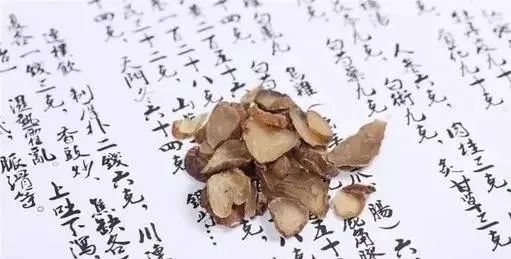

2. Dispelling Cold and Alleviating Pain, Enhancing Effects through Combinations

The “Ben Cao Qiu Zhen” records that Aconite “passes through all twelve meridians, reaching everywhere.” Aconite is used from the root, which can warm the meridians and alleviate pain.
Zhang Zhongjing used Aconite in treating chest obstruction and heart pain, as well as various pain syndromes.
For example, Wu Tou (Aconite) and Chi Shi Zhi (Red Stone) pills treat true heart pain, Gui Zhi Aconite Decoction, Bai Zhu Aconite Decoction, and Aconite Decoction can all treat obstruction syndromes.
Professor Wang also emphasizes the application of Aconite in treating various pain syndromes and highlights the importance of reasonable combinations to enhance the efficacy of Aconite.
For instance, Aconite combined with Ma Huang, Gui Zhi, and Shao Yao.

The lungs govern all meridians, and Ma Huang opens and disperses lung qi, allowing for unobstructed flow of qi and alleviating pain.
Aconite warms yang in combination with Ma Huang to achieve pain relief.
A postpartum patient experienced pain in all joints, was sensitive to wind and cold, and could not find relief even with blankets. Professor Wang prescribed Huo Luo Xiao Ling Dan combined with Ma Huang, Xi Xin, and Aconite Decoction, resulting in significant therapeutic effects.

Combining Aconite with Gui Zhi can also enhance the efficacy of warming the meridians and alleviating pain.
Gui Zhi is pungent and warm, dispersing cold and warming the meridians, and when combined with Aconite, it enhances the pain relief effect.
Professor Wang treated a patient with rheumatoid arthritis using a self-formulated Chuan Teng Tong Bi Decoction, where Gui Zhi disperses cold and alleviates pain, and the combination with Aconite significantly improved pain relief.

Shao Yao nourishes blood and restrains yin, alleviating acute pain. When combined with Aconite, it harmonizes yin and yang, disperses and collects, warms yang, benefits yin, dispels cold, and alleviates pain.
Professor Wang often uses Xiao Jian Zhong Decoction with Aconite to treat patients with cold abdominal pain, where Aconite is pungent and warm, and Shao Yao alleviates acute pain, yielding excellent results.
Professor Wang believes that Aconite reaches all meridians, moving without restraint. Therefore, it is crucial to combine it reasonably with herbs like Ma Huang, Gui Zhi, and Shao Yao in clinical practice.
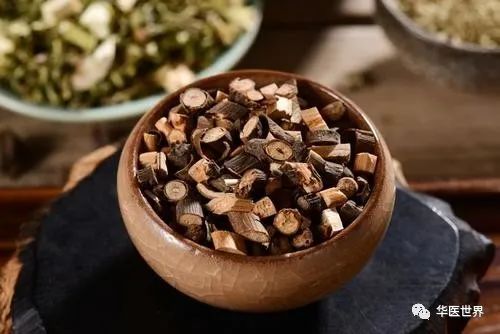

3. Replenishing Fire and Assisting Yang, Early and Broad Use

The “Changsha Yao Jie” records that Aconite “warms the Spleen in the middle and warms the Kidney in the lower. It replenishes the fire of the vital essence and continues the root of the yang that is about to be severed.”
Zhang Zhongjing skillfully uses Aconite to protect yang energy, such as using Aconite and rice decoction for treating middle jiao deficiency and cold, and for treating kidney yang deficiency with water diseases, he selects Zhen Wu Decoction and Shen Qi Wan.
Nowadays, modern people often have irregular lifestyles and stay up late, damaging their yang; or they excessively consume cold and cool foods, leading to yang deficiency and various diseases over time.
Insufficient yang energy and unstable exterior defenses lead to decreased immunity, making the body susceptible to external pathogens.
If the Spleen yang is damaged, Spleen and Kidney yang deficiency, impaired qi transformation, and water retention can lead to water diseases.
Water is a yin pathogen that easily obstructs yang energy. Aconite is pungent and hot, which can promote the flow of yang energy, thus dispersing yin pathogens and allowing water and fluids to distribute throughout the body, as stated in the “Jin Gui Yao Lue: Water Diseases and Pulse Diagnosis” that “when the great qi turns, its energy disperses.”
Professor Wang also skillfully uses Aconite to protect yang energy, such as using Ma Huang, Xi Xin, and Aconite Decoction with adjustments to treat allergic rhinitis due to lung and kidney yang deficiency, using Yi Yi Ren (Job’s Tears) and Aconite Bai Jiang San to treat ulcerative colitis with Spleen and Kidney yang deficiency and damp-heat accumulation, and using Zhen Wu Decoction to treat dilated cardiomyopathy with heart and kidney yang deficiency.
Professor Wang believes that patients with yang deficiency should use Aconite early to prevent problems before they arise, which is to assess the situation in advance and treat it at the early stage.
In clinical practice, as long as the diagnosis is accurate, for patients with yang deficiency, adding Aconite appropriately to the main formula can have a significant effect, starting with a small amount of processed Aconite and gradually increasing the dosage.
02
Expanding the Use of Aconite through Classic Cases

It is generally believed that Aconite is very pungent and hot, which can easily damage yin fluids.
However, Professor Wang believes that the key to using Aconite is to achieve a balance between yin and yang. In addition to treating various yang deficiency syndromes, it can also treat many heat and dryness syndromes through reasonable combinations.
Aconite moves without restraint, assisting heart yang to open the meridians, warming lung yang to stabilize the exterior, assisting Spleen yang to benefit qi, and assisting Kidney yang to replenish fire, internally supplementing original yang and externally dispersing cold and dampness to alleviate pain.
Therefore, Aconite has a broad range of clinical applications.
In clinical practice, it is necessary to follow the principles of Zhang Zhongjing’s medication philosophy, closely adhere to the core pathogenesis, and use reasonable combinations to expand its application. When used appropriately, the effects can be remarkable.

1. Combining with Lung-Resolving and Detoxifying Methods to Treat Acne

Acne is a chronic inflammation of the hair follicles and sebaceous glands occurring on the face, chest, and back, known in TCM as “fen ci” (粉刺).
The etiology and pathogenesis of acne are complex, and historical physicians have had varying understandings. Most believe that its pathogenesis involves lung heat steaming, blood heat obstructing the skin; or dietary irregularities leading to Spleen and Stomach heat, externally steaming the face; or damp-heat accumulation; or imbalance of yin and yang with excessive fire.
Professor Wang believes that lung qi stagnation, impaired opening and closing, Spleen and Stomach heat accumulation, and imbalance of yin and yang are the overall pathogenesis of acne. Treatment should focus on clearing lung and stomach heat, while also emphasizing the coordination of yin and yang.
Nowadays, young people often have irregular diets, poor lifestyles, and excessive late-night activities, leading to lower jiao yang deficiency, unstable kidney yang, and virtual fire invading the lungs. Therefore, acne is not simply due to heat in the lung meridian, but often presents with both cold and heat.


Tang, a 23-year-old female, presented with numerous papules and pustules on her face, chest, and back for 10 years, worsening over the past 2 months, and sought treatment on October 7, 2019.
The patient had developed papules on her face 10 years ago without systematic treatment.
In the past 2 months, due to heavy academic pressure and late-night study, red papules worsened around the face, mouth, neck, chest, and back, accompanied by pustules and nodules, prompting her to seek TCM treatment.
Current symptoms: Numerous red papules on the face, around the mouth, on both sides of the neck, chest, and back, with pustules visible at the top of the papules, and the lesions are itchy and painful.
The patient is usually sensitive to cold, prefers fatty and spicy foods, has unstable emotions, and normal appetite and bowel movements.
Physical examination: Red papules on the face, around the mouth, on both sides of the neck, chest, and back, with pustules on the cheeks, around the mouth, and tip of the nose. Pressing can produce yellowish-white pus.
Scattered nodules on the face, dark red in color and hard in texture.
Skin is oily, and hands and feet are cold.
Large tongue with tooth marks, pale and tender tongue body, thin white coating, and slippery pulse.
TCM Diagnosis: Acne. Pattern differentiation indicates lung and stomach heat accumulation, with upper heat and lower cold.
Western Diagnosis: Acne.
Treatment Method: Clear lung and stomach heat, detoxify, and support yang.
Administered Ma Huang, Xi Xin, and Aconite Decoction combined with Loquat Clear Lung Decoction with adjustments.
Prescription as follows:
Ma Huang 10g, Xi Xin 3g
Hei Shun Pian 10g (first decoct for 30 minutes), Niu Xi 15g
Loquat leaves 30g, Sang Bai Pi 20g, Zhe Bei Mu 15g,
Apricot kernel 10g, Dandelion 30g, Wild Chrysanthemum 15g
Summer Caltrop 20g, Lian Qiao 20g, Angelica 15g
Fennel 10g, Stir-fried Sophora Flower 20g
30 doses, decoct in water, 1 dose per day, taken warm in the morning and evening.
November 7, 2019, Second Diagnosis
The patient’s red papules on the cheeks, neck, and back have subsided, and nodules have disappeared. However, new lesions appeared after eating beef and lamb a week ago, and the papules on the chest and back have worsened.
The tongue is large, with tooth marks, pale and tender tongue body, and white coating.
Increased Lian Qiao to 30g in the previous prescription, added Zihua Diding 30g. 30 doses, decoct in water, 1 dose per day, taken warm in the morning and evening.
December 18, 2019, Third Diagnosis
The patient’s pustules and nodules on the face and back have basically subsided, with scattered papules remaining on the chest, occasionally itchy. The tongue is large, with tooth marks, pale and tender tongue body, and thin white coating.
Increased Hei Shun Pian to 20g in the second diagnosis prescription. 14 doses, decoct in water, 1 dose per day, taken warm in the morning and evening.
Note:
The patient is in her youth, with numerous red papules on the face, around the mouth, neck, chest, and back, with significant redness and pain in the lesions.
The “Wai Ke Zheng Zong” states that acne belongs to the lung, primarily due to blood heat and dampness stagnation.
This patient has lung qi stagnation, which has transformed into heat over time, obstructing the lung collaterals, leading to impaired opening and closing of the lungs, resulting in internal and external blockage, with pathogenic qi stagnating in the skin.
The patient usually prefers fatty and spicy foods, leading to Spleen and Stomach heat accumulation, obstructing qi dynamics in the middle jiao, generating internal damp-heat, obstructing qi and blood, and forming phlegm that condenses in the skin.
The patient has a constitution of yang deficiency, and recent late-night activities have worsened the symptoms. Lower jiao yang deficiency and unstable kidney yang have led to virtual fire invading the lungs, causing red papules and pustules on the face and chest.
Combining the patient’s tongue and pulse, the pattern is differentiated as lung and stomach heat accumulation, with upper heat and lower cold, thus the prescription of Ma Huang, Xi Xin, and Aconite Decoction combined with Loquat Clear Lung Decoction was selected.
In the prescription, Ma Huang opens yang, Xi Xin raises yang, and Hei Shun Pian warms yang, allowing lung qi to disperse, original yang to be warmed, and the exterior and interior to be unblocked. The three herbs work together to warm the lesser yin meridian and release the exterior.
Niu Xi enhances kidney strength and can also guide the virtual fire downwards.
Loquat leaves clear the lung and harmonize the stomach, while Sang Bai Pi clears the lung and promotes urination, allowing lung heat to be expelled through urination.
Zhe Bei Mu and Apricot kernel enhance the ability to disperse and clear the lung.
Dandelion and Wild Chrysanthemum detoxify and reduce swelling, while Summer Caltrop and Lian Qiao enhance heat-clearing and detoxifying effects.
Due to the patient’s poor emotional state, Angelica is added to nourish blood and soften the liver, while Fennel and Stir-fried Sophora Flower regulate the liver and qi.
In the second diagnosis, the patient relapsed due to dietary irregularities, so Zihua Diding was added to enhance the heat-clearing and detoxifying effects.
In the third diagnosis, the patient’s skin lesions had basically subsided, but the tongue body was pale and tender, indicating a fear of cold damaging yang, so the warming yang effect was strengthened by increasing the dosage of Hei Shun Pian.
Professor Wang emphasizes a comprehensive understanding of the disease in treating acne. Although acne is caused by lung and stomach heat rising to the face, this condition often coexists with yang deficiency. Therefore, treatment should not avoid Aconite due to fear of its heat exacerbating the condition, but should instead consider both deficiency and excess, balancing cold and heat to achieve harmony between yin and yang.
After taking the medicine, the patient’s symptoms significantly improved, and the treatment corresponded well with the diagnosis, leading to complete recovery with continued care.
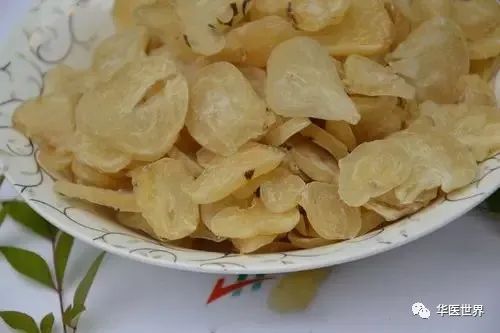

2. Combining with Qi-Boosting and Yin-Nourishing Methods to Treat Sjögren’s Syndrome

Sjögren’s syndrome is a diffuse connective tissue disease characterized by the invasion of exocrine glands such as the lacrimal and salivary glands, abnormal proliferation of B lymphocytes, and infiltration of lymphocytes in tissues. It falls under the category of “dry bi” in TCM.
The main causes include congenital insufficiency, insufficient form and qi, leading to disease due to deficiency; or acquired emotional disturbances, dietary irregularities, and imbalance of work and rest, which deplete fluids and fail to nourish the organs; or inappropriate food and medicine, excessive consumption of spicy and hot foods, accumulating heat and toxins, which burn fluids and lead to dryness.
Professor Wang believes that qi and blood stagnation, along with yin fluid deficiency, are the pathogenesis of this condition. Treatment should focus on regulating qi and blood, nourishing yin, and dispelling yang.
He skillfully uses Aconite to treat the yang deficiency and loss of warmth in dry bi.
The “Su Wen: Discussion on the Timing of Zang Qi” states: “The kidney suffers from dryness, and spicy foods should be consumed to moisten it. Open the pores to produce fluids and regulate qi.” Patients with this condition often have a constitution of yang deficiency and impaired fluid movement, or yin condenses and dries out, with fluids trapped by pathogens, obstructing the qi transformation, leading to stagnation of qi and blood.
Professor Wang treats this condition with Ma Huang, Xi Xin, and Aconite Decoction as the base formula, adding herbs that nourish yin, boost qi, and nourish blood, focusing on using pungent and warm herbs to promote fluid transformation.


Yang, a 75-year-old female, presented with dry mouth and dry eyes for over 10 years, worsening over the past 3 days, and sought treatment on June 12, 2019.
The patient had experienced dry mouth and dry eyes for 10 years and was diagnosed with Sjögren’s syndrome at another hospital.
In the past 3 days, the symptoms of dry mouth and dry eyes worsened, accompanied by sensitivity to cold and sweating, prompting her to seek TCM treatment.
Current symptoms: Dry mouth that does not improve with drinking, sticky phlegm in the throat, dry eyes, feeling sad without tears, and discomfort in the stomach.
The patient is usually sensitive to cold, sweats easily, has a normal appetite, and normal bowel movements, and sleeps reasonably well.
Physical examination: Dry skin. The tongue is pale, without coating, with little fluid, and the pulse is weak.
TCM Diagnosis: Dry bi with pattern differentiation indicating insufficient qi and yin, and yang deficiency leading to failure to transform.
Western Diagnosis: Sjögren’s syndrome.
Treatment Method: Nourish yin, dispel yang, and regulate qi and blood.
Administered Ma Huang, Xi Xin, and Aconite Decoction combined with Sha Shen (Glehnia) and Mai Dong (Ophiopogon) Decoction with adjustments.
Prescription as follows:
Ma Huang 10g, Xi Xin 3g
Hei Shun Pian 15g (first decoct for 30 minutes), Bei Sha Shen 10g
Mai Dong 20g, Shi Hu 20g, Angelica 20g
Sheng Huang Qi 30g, San Leng 6g, Bai He 30g
Wu Yao 6g, Calcined Oyster Shell 20g (first decoct)
Floating Wheat 30g, Honey-fried Licorice 15g
14 doses, decoct in water, 1 dose per day, taken warm in the morning and evening.
June 26, 2019, Second Diagnosis
The patient’s dry mouth and sweating have not improved.
Increased Shan Zhu Yu to 20g and Huang Bai to 6g in the previous prescription. 14 doses, decoct in water, 1 dose per day, taken warm in the morning and evening.
July 10, 2019, Third Diagnosis
The patient’s dry mouth has improved, but she still feels cold. The tongue has slightly more fluid.
Increased Hei Shun Pian to 25g in the second diagnosis prescription. 14 doses, decoct in water, 1 dose per day, taken warm in the morning and evening.
July 24, 2019, Fourth Diagnosis
The patient has recently had poor sleep, cracked lips, and some fluid on the tongue.
Removed Ma Huang from the third diagnosis prescription. 14 doses, decoct in water, 1 dose per day, taken warm in the morning and evening.
August 14, 2019, Fifth Diagnosis
The patient’s dry mouth has significantly improved, and she reports saliva in her mouth, with increased sweating.
Removed San Leng from the fourth diagnosis prescription, added Sang Ye 30g and Wu Wei Zi 6g. 14 doses, decoct in water, 1 dose per day, taken warm in the morning and evening.
Note:
The patient is in her seventies, with declining kidney qi, insufficient Chong and Ren, and diminished essence and marrow.
Her long-term condition has led to deficiency of righteous qi, lack of nourishment to the organs and meridians, stagnation of qi and blood, and depletion of qi and injury to yin, resulting in dry bi.
The patient is usually sensitive to cold, and based on her tongue and pulse, this indicates yang deficiency leading to failure to transform, with fluids trapped by cold, resulting in qi not transforming into fluids and fluids not distributing.
Using the method of “spicy to moisten” from the “Su Wen: Discussion on the Timing of Zang Qi,” pungent and warm herbs are used to invigorate kidney yang, which can assist in qi transformation and promote the movement of fluids throughout the body.
In the prescription, Ma Huang is pungent and warm, Xi Xin is pungent and warm, and Hei Shun Pian warms and supplements original yang, allowing yang energy to be supported and fluids to be transformed.
Due to the patient’s age and long-term illness, Bei Sha Shen, Mai Dong, and Shi Hu are selected to nourish yin and moisten dryness, while Huang Qi and Angelica are used to boost qi and nourish blood.
Since the patient has been ill for a long time, a small amount of San Leng is added to invigorate blood and regulate qi, allowing fluids to flow smoothly.
The patient has discomfort in the stomach, so Bai He and Wu Yao are added to clear and moisten, harmonizing the stomach; and for sticky phlegm in the throat, Calcined Oyster Shell is used to resolve phlegm and regulate qi.
Due to frequent sweating, Floating Wheat is added to boost qi and restrain sweating, while Honey-fried Licorice harmonizes the herbs.
In the second diagnosis, the patient did not improve due to dietary irregularities, so Shan Zhu Yu was added to nourish yin and restrain sweating, as its sour nature can also generate fluids.
Huang Bai was added to prevent excessive dampness.
In the third diagnosis, the patient felt even colder, so the dosage of Hei Shun Pian was increased to support yang.
In the fourth diagnosis, Ma Huang was removed due to the patient’s poor sleep.
In the fifth diagnosis, the patient’s dry mouth has improved, and there is some fluid on the tongue, but the patient still sweats, so Sang Ye and Wu Wei Zi were added to restrain sweating and generate fluids.
Professor Wang emphasizes a comprehensive understanding of the disease, focusing on achieving harmony between yin and yang, and ensuring the recovery of righteous qi, smooth flow of fluids, and improvement of the condition.
Professor Wang stresses not to fear the pungency of Aconite; although it is very hot, it is heavy and moist. It is essential to grasp the pathogenesis tightly, and for patients with yang deficiency and failure to transform, Aconite should be selected, but it should be started in small amounts and gradually increased.
Professor Wang believes that we should promote Zhang Zhongjing’s methods of using Aconite, emphasizing early use, broad use, and heavy use in clinical practice.
Early use means that patients with yang deficiency should use Aconite early, assessing the situation in advance and treating it at the early stage to prevent problems.
Broad use means that for any condition of yang deficiency, yin and yang deficiency, qi deficiency, weakness, yang not transforming yin, excess cold, deficiency cold, mixed cold and heat, or coexisting deficiency and excess, as long as there is insufficient yang, Aconite should be used, starting with small doses and gradually increasing.
Heavy use means that in treating critical and severe conditions, for patients with yang deficiency and excess internal cold, using high doses of Aconite can effectively treat severe illnesses, with doses exceeding 30g (but starting from 15g, and gradually increasing if no toxic side effects occur).
